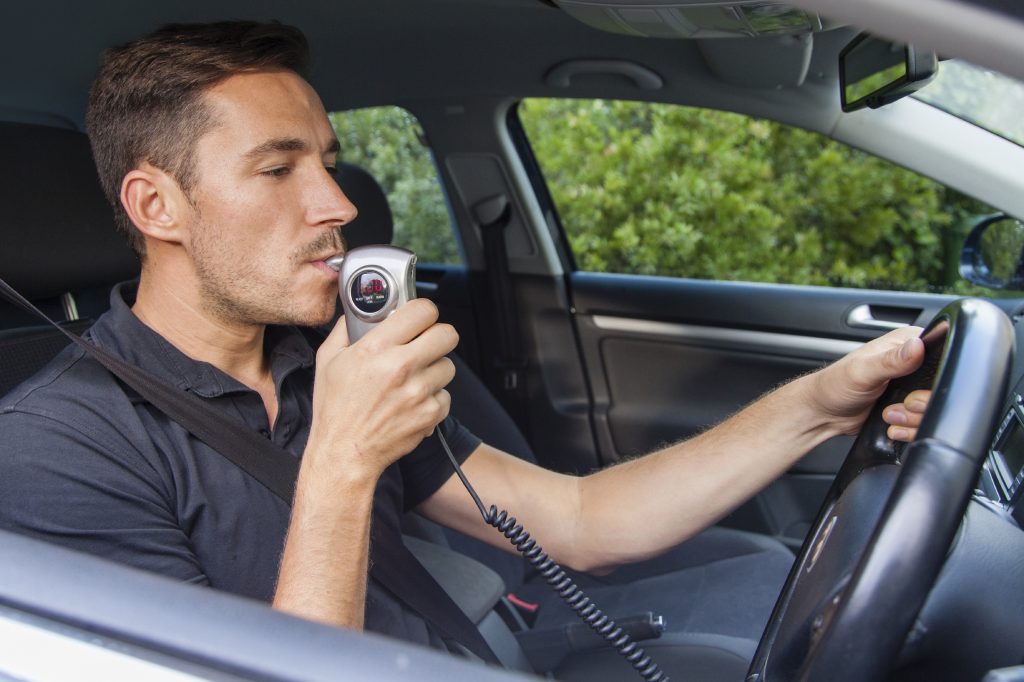Following a recent article on the problems with evidentiary breath test devices, the New York Times has published an article about the dangers of having a ignition interlock device in a car. Specifically, the article discusses the car wrecks that have been caused by “rolling tests” that require a driver to blow hard into the ignition interlock device while the car is in motion. Most people understand that an ignition interlock device will prevent an engine from starting until the driver has blown into the machine and demonstrated that he or she does not have alcohol in his or her system. Many people do not realize that the interlock devices also require the driver to blow at random times while driving, apparently for the purpose of showing that they have not been drinking while actually driving the car. Generally, after a car is started, the device requires that the driver blow after about 5 minutes, and then every 10 or 15 minutes thereafter. If the driver does not blow, or blows numbers, the car will either begin blowing the horn and flashing the headlights, shut down or the device will at least report a violation. Not only is this annoying to the driver, the distraction in the vehicle has led to car wrecks, injuries and deaths.

Blowing into the ignition interlock device requires a fair amount of breath, which has led to people passing out from the exertion, being distracted trying to find the device in their car, or simply being distracted from having to take their hand off of the steering wheel, locate the device and then blow in it while driving. Of course, there is also the problem with false positives causing cars not to start or failures of rolling tests. Proponents of ignition interlock devices, of which there are many, including a very financially powerful interlock lobby, cite the good that interlock devices have done in reducing drunk driving as outweighing these potential risks of distracted driving. However, the entire aim of the ignition interlock laws is to make driving safer and reduce the risk of car collisions, which according to the article and common sense is not entirely fulfilled when drivers are having to blow while actually driving.
Ignition interlock devices are only growing in their popularity, with nearly every state in America requiring them for some period of time after a DUI conviction or license suspension. Kansas has had the ignition interlock as a requirement for every DUI case for many years now. The program is continuing to expand, with new regulations requiring cameras on the devices (to assure that the driver is not having someone else blow in the machine) and requiring more frequent downloads of the data in the device and otherwise more closely monitoring the people required to drive with an ignition interlock device. Proposed federal law would require that interlock be required in every new car manufactured and sold in America. Kansas is considering new laws that would require more and longer periods of restriction to ignition interlock devices. Given the amount of money that ignition interlock companies are making from these laws, and the number of lobbyists that they employ, it is likely we will continue to see ignition interlock requirements expand in Kansas and elsewhere over the coming years.
Currently, Kansas requires an ignition interlock device be installed on every car that a driver operates after that person has been convicted of a Kansas DUI or administratively suspended as a result of a breath, blood or urine test failure for alcohol in Kansas. A first time conviction will trigger a 30 day suspension followed by a 6 month period of restriction to an ignition interlock device if the person blew between .08 and .149. A first time conviction for DUI in Kansas in which the breath test was .150 or higher triggers a one year suspension followed by one year of restriction to ignition interlock device. During the one year suspension, the driver can apply for a “limited restricted driver’s license” which would allow him or her to drive for work purposes and other limited circumstances for the remainder of the one year suspension, after he or she has served 45 days of the suspension. The period of suspension and restriction go up for each subsequent DUI conviction. In addition to the potential for suspension/ignition interlock related to the criminal case, a driver is likely to have an administrative action against his or her license. A first time “occurrence” will trigger the same suspensions for a conviction if the person took the breath, blood or urine test. A refusal of a test, if the person has never had a prior, will trigger a one year suspension followed by 2 years of restriction to ignition interlock device. The driver is eligible for the limited restricted work privileges after 90 days. That means if a person has never been arrested before, and they refuse a test in Kansas, they are looking at a 3 year action against their license. All but 90 days of that transaction may be restricted to ignition interlock device. So, the person will have to get very used to having the machine in their car and will take thousands of these rolling tests.
Generally, an ignition interlock device costs $150 to have installed and around $75 per month, every month, for the months or years that it is required. There are many other expenses involved in having an ignition interlock device including moving it from one car to another, lockouts, and any other service or maintenance that is required. Ignition interlocks are big business and the industry is adamantly opposed to eliminating rolling tests or requiring drivers to stop the car before blowing.
